Do you have a question about the Panasonic TC-65AX800U and is the answer not in the manual?
Ensures reliable operation by providing openings for ventilation and preventing overheating.
Instructions to prevent electric shock, fire hazards, and damage from electrical components.
Guidelines for safe operation, including grounding, cord protection, and using approved accessories.
Warning about small children swallowing 3D Eyewear parts and seeking immediate medical attention.
Restrictions on using 3D Eyewear in hospitals, near automatic control equipment, or pacemakers.
Guidelines for careful handling, storage, and battery safety for 3D Eyewear.
Instructions for maintaining compliance, using shielded cables, and ferrite cores.
Information on built-in transmitters and RF exposure limits for wireless operation.
Details of model, responsible party, and support contact for FCC compliance.
General safety guidelines for TV installation and use, emphasizing manufacturer recommendations.
Advice on professional installation, using certified mounts, and checking wall suitability.
Guidelines for safely moving older CRT televisions and placing them securely.
List of accessories that should be included with the TV, such as remote, batteries, and manuals.
Instructions to use both Front and Rear Pedestals together for TV setup.
Details on attaching the Rear Pedestal using assembly screws.
Steps to safely remove the Rear Pedestal for wall-mounting or repacking the TV.
Cautions against disassembling, modifying, or using damaged pedestals to prevent injury.
Instructions for safely moving the TV with at least two people and avoiding unstable surfaces.
Steps to attach the provided ferrite core to the power cord to reduce interference or electrical noise.
Diagram and numbering of the various connection ports on the back of the TV.
Guidance on connecting power cords, cable ties, and antenna/cable TV.
How to connect 4K compatible equipment to HDMI or DisplayPort for 4K content viewing.
Instructions for connecting AV devices via HDMI/Component terminals.
How to connect SD picture sources using composite video and audio cables.
Instructions for connecting the TV to a broadband network via wired Ethernet or wireless LAN.
Recommendations and precautions for using the built-in wireless LAN and Bluetooth features.
How to connect audio equipment like amplifiers using optical or HDMI cables.
Instructions for connecting a computer to the TV using a DisplayPort cable.
Steps for putting cables into the cover, using cable ties, and avoiding pinching.
Instructions for attaching the cable tie and bundling cables securely.
Steps to loosen and remove the cable tie from the TV.
Identifies front and back controls like the built-in camera, sensors, and power indicator.
Details the functions of buttons on the back of the TV for input, menu, and volume.
Diagram and numbering of buttons on the remote control and their primary functions.
Explanation of each button's operation, including special functions and external equipment control.
Introduction to the Touch Pad Controller's features and pairing requirement.
Instructions on how to use the touch pad for navigation, selection, and scrolling.
Guidelines for using voice control and understanding the transmission range.
Steps for installing batteries in the Remote Control and Touch Pad Controller.
Cautions regarding battery handling, mixing types, and preventing leakage or damage.
Procedure for turning on the TV for the first time and accessing the initial setup screen.
Steps for selecting language, country, viewing mode, and configuring network connection.
Guide for setting up channels based on connection type and adjusting the clock settings.
How to turn the TV on and navigate the Home Screen for content selection.
Instructions for accessing the Apps list and features, and customizing the Home Screen.
Guidelines for handling the 3D Eyewear lens, avoiding damage, and safe usage.
Cautions on interference, temperature, lighting, and user comfort during 3D viewing.
Steps to pair the 3D Eyewear with the TV and conditions for automatic reconnection.
Information on supported 3D content types like Blu-ray discs and broadcasts.
Instructions for changing the TV display between 3D and 2D formats manually or automatically.
How to press the eHELP button to access the built-in manual.
Instructions for selecting pages, menus, submenus, and scrolling within the eHELP guide.
How to use the built-in Self Test to confirm the TV is working properly.
Steps for a non-working remote control, including battery checks and pairing.
Solutions for no picture, blank screen, or snowy screen, checking connections and inputs.
Steps for the Touch Pad Controller, including battery and pairing checks.
Instructions for gently wiping the display panel with a soft cloth and mild soap solution.
Methods for cleaning the TV cabinet and pedestal using soft cloths and mild soap.
Guidance on cleaning the power cord plug and the 3D Eyewear with soft, dry cloths.
Details on screen size, resolution, dimensions, and pixel count.
Information on speaker output, connection terminals, and wireless LAN standards.
Details on the built-in camera's focus and resolution, and overall TV dimensions and mass.
Guidance on using a qualified installer for purchasing and installing the wall-hanging bracket.
Steps to remove the Front and Rear Pedestals before mounting the TV to prevent damage.
Instructions for attaching the bracket, screw depth requirements, and safety checks.
Important safety precautions and warnings regarding wall mounting, potential hazards, and equipment falling.
Explains coverage for defects, repair/replace/refund options, and warranty periods for TV categories.
Information on submitting repair requests, shipping instructions, and required proof of purchase.
Details what the warranty does not cover, including wear, damage, misuse, and commercial use.
How to obtain product information, operating assistance, and locate dealers via website or contact info.
Information on purchasing parts, accessories, and manuals online or via email/phone.
Details warranty for Canadian products, including coverage, service options, and required proof of purchase.
Specifies what is not covered by the Canadian warranty, including wear, damage, and misuse.
Ensures reliable operation by providing openings for ventilation and preventing overheating.
Instructions to prevent electric shock, fire hazards, and damage from electrical components.
Guidelines for safe operation, including grounding, cord protection, and using approved accessories.
Warning about small children swallowing 3D Eyewear parts and seeking immediate medical attention.
Restrictions on using 3D Eyewear in hospitals, near automatic control equipment, or pacemakers.
Guidelines for careful handling, storage, and battery safety for 3D Eyewear.
Instructions for maintaining compliance, using shielded cables, and ferrite cores.
Information on built-in transmitters and RF exposure limits for wireless operation.
Details of model, responsible party, and support contact for FCC compliance.
General safety guidelines for TV installation and use, emphasizing manufacturer recommendations.
Advice on professional installation, using certified mounts, and checking wall suitability.
Guidelines for safely moving older CRT televisions and placing them securely.
List of accessories that should be included with the TV, such as remote, batteries, and manuals.
Instructions to use both Front and Rear Pedestals together for TV setup.
Details on attaching the Rear Pedestal using assembly screws.
Steps to safely remove the Rear Pedestal for wall-mounting or repacking the TV.
Cautions against disassembling, modifying, or using damaged pedestals to prevent injury.
Instructions for safely moving the TV with at least two people and avoiding unstable surfaces.
Steps to attach the provided ferrite core to the power cord to reduce interference or electrical noise.
Diagram and numbering of the various connection ports on the back of the TV.
Guidance on connecting power cords, cable ties, and antenna/cable TV.
How to connect 4K compatible equipment to HDMI or DisplayPort for 4K content viewing.
Instructions for connecting AV devices via HDMI/Component terminals.
How to connect SD picture sources using composite video and audio cables.
Instructions for connecting the TV to a broadband network via wired Ethernet or wireless LAN.
Recommendations and precautions for using the built-in wireless LAN and Bluetooth features.
How to connect audio equipment like amplifiers using optical or HDMI cables.
Instructions for connecting a computer to the TV using a DisplayPort cable.
Steps for putting cables into the cover, using cable ties, and avoiding pinching.
Instructions for attaching the cable tie and bundling cables securely.
Steps to loosen and remove the cable tie from the TV.
Identifies front and back controls like the built-in camera, sensors, and power indicator.
Details the functions of buttons on the back of the TV for input, menu, and volume.
Diagram and numbering of buttons on the remote control and their primary functions.
Explanation of each button's operation, including special functions and external equipment control.
Introduction to the Touch Pad Controller's features and pairing requirement.
Instructions on how to use the touch pad for navigation, selection, and scrolling.
Guidelines for using voice control and understanding the transmission range.
Steps for installing batteries in the Remote Control and Touch Pad Controller.
Cautions regarding battery handling, mixing types, and preventing leakage or damage.
Procedure for turning on the TV for the first time and accessing the initial setup screen.
Steps for selecting language, country, viewing mode, and configuring network connection.
Guide for setting up channels based on connection type and adjusting the clock settings.
How to turn the TV on and navigate the Home Screen for content selection.
Instructions for accessing the Apps list and features, and customizing the Home Screen.
Guidelines for handling the 3D Eyewear lens, avoiding damage, and safe usage.
Cautions on interference, temperature, lighting, and user comfort during 3D viewing.
Steps to pair the 3D Eyewear with the TV and conditions for automatic reconnection.
Information on supported 3D content types like Blu-ray discs and broadcasts.
Instructions for changing the TV display between 3D and 2D formats manually or automatically.
How to press the eHELP button to access the built-in manual.
Instructions for selecting pages, menus, submenus, and scrolling within the eHELP guide.
How to use the built-in Self Test to confirm the TV is working properly.
Steps for a non-working remote control, including battery checks and pairing.
Solutions for no picture, blank screen, or snowy screen, checking connections and inputs.
Steps for the Touch Pad Controller, including battery and pairing checks.
Instructions for gently wiping the display panel with a soft cloth and mild soap solution.
Methods for cleaning the TV cabinet and pedestal using soft cloths and mild soap.
Guidance on cleaning the power cord plug and the 3D Eyewear with soft, dry cloths.
Details on screen size, resolution, dimensions, and pixel count.
Information on speaker output, connection terminals, and wireless LAN standards.
Details on the built-in camera's focus and resolution, and overall TV dimensions and mass.
Guidance on using a qualified installer for purchasing and installing the wall-hanging bracket.
Steps to remove the Front and Rear Pedestals before mounting the TV to prevent damage.
Instructions for attaching the bracket, screw depth requirements, and safety checks.
Important safety precautions and warnings regarding wall mounting, potential hazards, and equipment falling.
Explains coverage for defects, repair/replace/refund options, and warranty periods for TV categories.
Information on submitting repair requests, shipping instructions, and required proof of purchase.
Details what the warranty does not cover, including wear, damage, misuse, and commercial use.
How to obtain product information, operating assistance, and locate dealers via website or contact info.
Information on purchasing parts, accessories, and manuals online or via email/phone.
Details warranty for Canadian products, including coverage, service options, and required proof of purchase.
Specifies what is not covered by the Canadian warranty, including wear, damage, and misuse.
| Screen Type | led |
|---|---|
| Wall Mount | 400mm x 400mm |
| Screen Size | 64.5 inches, 65 inches |
| Refresh Rate | 120hz |
| USB Ports | 3 |
| RF Antenna | yes |
| Headphones Output | yes |
| Digital Optical Audio Outputs | 1 |
| Component Video Inputs | 1 |
| Composite Video Inputs | 1 |
| DVI | 0 |
| Remote Control | multifunction |
| 3D | yes |
| Width with Stand | 57.88 inches |
| Depth without Stand | 1.88 inches |
| Height without Stand | 34 inches |
| Net Weight without Stand | 88.2 pounds |
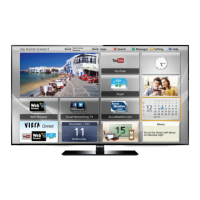



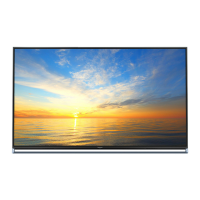
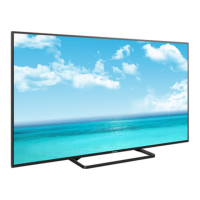
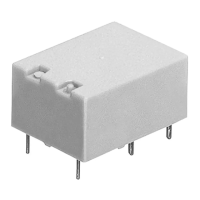

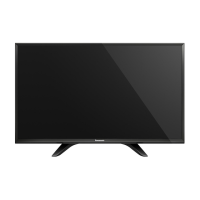
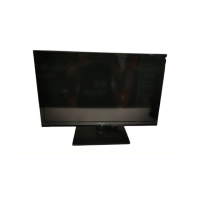
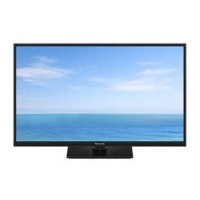

